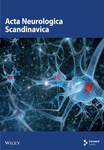Cholinesterase inhibitors, β-amyloid precursor protein and amyloid β-peptides in Alzheimer's disease
Abstract
The extracellular deposition of amyloid beta-peptide (Aβ) in the form of cerebrovascular amyloid and extracellular plaques is one of the major neuropathological manifestations of Alzheimer's disease (AD). Aβ is generated proteolytically from the large beta-amyloid precursor protein (APP). APP is cleaved by a group of proteases called “secretase” to generate soluble derivatives of APP (sAPP), which are secreted in human plasma, CSF and cultured cells. Neurochemically, there is a severe loss of cholinergic neurons and a decreased synthesis of acetylcholine in neocortex in AD. Current approved AD drugs, such as aricept and tacrine, are based on the use of cholinesterase inhibitors (ChEIs) and have been reported to improve memory deficits and cognitive decline in some patients with AD. To compare the effects of ChEIs on APP processing, we have tested a series of ChEIs such as tacrine, physostigmine, metrifonate, phenserine and cymserine in cultured human neuroblastoma cells. We analyzed levels of sAPP by immunochemical techniques with APP-specific antibodies and assayed levels of Aβ by a sensitive sandwich ELISA. Based on these results, ChEIs can be divided into three groups: the first group of ChEIs had no effect on sAPP secretion, the second decreased the sAPP secretion only, and third group affected the secretion of sAPP and Aβ. The difference in the action of metrifonate, physostigmine, phenserine and tacrine on APP processing is independent of their selectivity for the cholinesterase enzymes. This possibly is due to the different targets that are used by ChEIs. Studying the effects of ChEIs on different targets is useful to maximize the benefit of ChEIs for the treatment of AD subjects.




